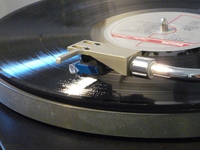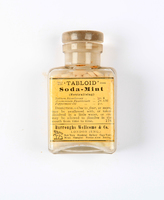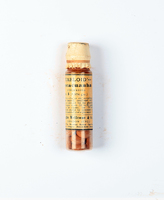Items
keywords is exactly
poison
-

Mozart's Antimony
Medical bedside cabinet, gramophone player with a hypodermic needle substitution, Mozart’s Sonata in C, KV 279 and Sonata in D, KV 576. The needle is slowly scratching irreparable grooves into the record whilst the record in return, is making the needle blunt.. "On 20 October 1791, Mozart told his wife Constanza that he was being poisoned. On 20 November he developed a fever; his hands, feet and stomach became swollen, and he had attacks of vomiting. He died on the 5th of December. Although Antonio Salieri confessed to Mozart’s murder several years later, it is highly unlikely as Salieri suffered from senile dementia. In 1991, Ian James of London’s Royal Free Hospital attributed Mozart’s death to antimony, a poison that Mozart may have been given by his doctor - not to kill him but to cure him. Antimony was prescribed for what was then diagnosed as melancholia. In small doses it leads to headaches, fainting and depression. In large doses it can be fatal within days (Emsley 1999: 225). In the autumn of 1791, Mozart, suffering from severe depression, exacerbated by debt, the ill reception of his new work La Clemenza di Tito, and a commission to write a requiem which he believed was for his own funeral, dosed himself with a variety of medicines – one of these being antimony – and what was meant to cure, killed" (Liebenberg 2011: 85 - 91). -

Soda-Mint
"However, this bottle was not marked ‘poison,’ so Alice ventured to taste it, and, finding it very nice (it had, in fact, a sort of mixed flavour of cherry-tart, custard, pineapple, roast turkey, toffy, and hot buttered toast), she very soon finished it off. ‘What a curious feeling!’ said Alice. ‘I must be shutting up like a telescope!’ And so it was indeed: she was now only ten inches high, and her face brightened up at the thought that she was now the right size for going through the little door into that lovely garden. First, however, she waited for a few minutes to see if she was going to shrink any further: she felt a little nervous about this; ‘for it might end, you know,’ said Alice to herself, ‘in my going out altogether, like a candle. I wonder what I should be like then?’" (Carroll 2007: 18). -

Ipecacuanha
"One thrice daily as an expectorant and diaphoretic, or for gastric irritation. In dysentery, four or more may be given with one 'Tabloid' Opium, gr.1; and four to six as an emetic in poisoning, etc. These 'Tabloid' products should be powdered and taken with a little water" (BWC 1925:129). -

Corrosive Sublimate
"Powerful antiseptic. Highly poisonous. Use with caution. Gr. 1.75 in four ounces, or gr. 8.75 in a pint of water, makes a solution of 1 in 1000, a useful strength for washing wounds, etc (BWC 1925:125). -

Compound of Tincture of Chloroform and Morphine
"Directions: For an adult, from five to ten minims may be taken in a wineglasful of water, and repeated in three to four hours, if necessary. In severe cases, the dose may be increased to fifteen minims. As this preparation contains potent posions, it should be used with caution". (As read on the lable of the bottle) "Action and Uses: In addition to its well-known use as an anaesthetic, Chloroform has been highly recommended for the relief of asthma, and in the form of vaporoles can be employed safely during the passage of calculi from the gall-bladder or kidney. The vaporoles are the most useful in obstetric practice. A vaporole may be crushed and the vapour inhaled from the palm of the hand" (BWC 1896: 38). "Morphine Sulphate: Anodyne. Use with caution. One swallowed gives great relief of pain"(BWC 1925:132).


